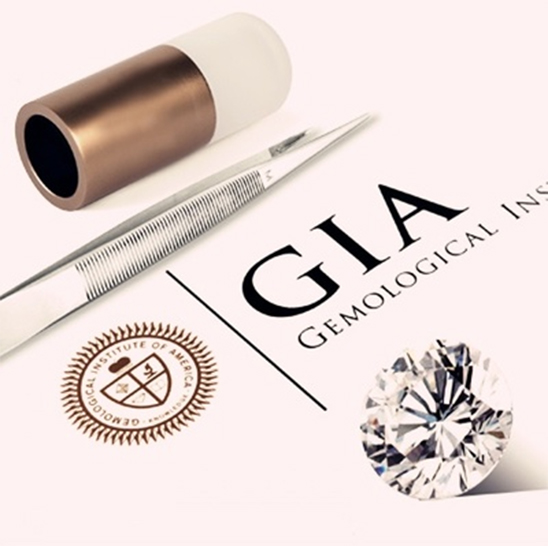GIA Diamond Clarity - How to Read and Understand Each GradePosted by coolweddingring on December 29th, 2020 Since precious stones are framed under outrageous warmth and weight, they unavoidably contain normally happening blemishes. Contingent upon the seriousness, these imperfections (called "incorporations" when inside the jewel and "flaws" when on a superficial level) can affect the general appearance of a precious stone. In the event that the blemishes are adequately extreme, they can disturb the way of light through the jewel, consequently diminishing its straightforwardness and splendor. The situation of a consideration influences how effectively it very well may be seen. Jewel cutters will bend over backward to cut a stone so incorporations are not noticeable through the highest point of the completed jewel. The GIA built up a lucidity scale as a method of deliberately assessing the number, size, reflectivity, shading, and position of these defects. This scale has now been close to all around embraced as a methods for imparting lucidity. At the point when a jewel is evaluated by the GIA, an endorsement is given revealing the discoveries recorded as a hard copy. This GIA authentication goes from purchaser to merchant with the jewel. Notwithstanding giving the clearness grade, the GIA authentication will regularly additionally show a precious stone plot. This plot is a realistic portrayal of the position and sort of considerations found. The plot doesn't demonstrate how noticeable or extreme the consideration is; that is the thing that the clearness grade is for. Utilizing the jewel plot and clearness grade together, the client can pick up a firm comprehension of the idea of any defects even without the genuine precious stone being available. In the event that a jewel has been dealt with (laser penetrating, break filling, and so on), the lucidity might be misleadingly improved. Truth be told, around one out of three jewels available today has been misleadingly upgraded here and there. Whenever recognized, GIA won't give an authentication to precious stones treated to improve clearness. Any kind of treatment or "upgrade" made to a precious stone brings down its worth. Thus, it is significant that clients demand an affirmed jewel except if they are positive about their own capacity to recognize such issues. While most labs follow the GIA scientific categorization for lucidity, others, (for example, AGS) don't. It is imperative to recall that while different labs may utilize the GIA phrasing, they may apply them in an unexpected way. Consequently, alert should be practiced when looking at two precious stones which have been appraised by various labs. Following is a breakdown of the GIA lucidity grades and their definitions. Further remarks are incorporated to enhance the official definition and increment comprehension of what each evaluation implies. (View a GIA Diamond Clarity Chart for reference). Faultless (FL) - No incorporations or flaws are obvious when seen under 10x amplification. Faultless jewels are incredibly uncommon. Short of what one out of 5,000 adornments quality precious stones will be appraised FL by GIA. Therefore, perfect evaluation jewels convey a significant value premium. Inside Flawless (IF) - No considerations, possibly imperfections are noticeable when seen under 10x amplification. Inside perfect jewels show up totally indistinguishable from impeccable precious stones when seen without a magnifier. Indeed, even with amplification, just a gifted grader can see IF level imperfections. Under 3% of precious stones sold for gems are evaluated IF. Incredibly, Slightly Included (VVS1 and VVS2) - Inclusions are hard to see under 10x amplification. Jewels reviewed VVS1 ordinarily have incorporations which must be seen when seeing the precious stone from the base, which is typically shrouded once a jewel is set in gold or platinum. Precious stones evaluated VVS2 have considerations that are obvious when seen from above; nonetheless, the incorporation is minuscule and can't be seen by the independent eye. VVS precious stones seem indistinguishable from perfect jewels until saw under amplification by a gifted grader. Roughly 10% of all precious stones sold for adornments are VVS grade. Find Out More https://www.tingdiamond.com/hk/education-diamond-grading/4cs/clarity Slightly Included (VS1 and VS2) - Minor Inclusions are recognizable under 10x amplification.
Versus considerations are not ordinarily noticeable to the independent eye. Just around 1 of every 100 undeveloped eyewitnesses could identify VS2 grade considerations with the independent eye. Obviously, under easygoing perception, VS jewels seem immaculate. Marginally Included (SI1 and SI2) - Inclusions are plainly obvious under 10x amplification. SI1 is the most minimal clearness grade with considerations that are normally imperceptible to the independent eye. SI1 jewels are a mainstream decision at their mix of cost and saw perfection. SI2 incorporations are regularly noticeable to the independent eye, albeit just with close review. With the presentation of noticeable blemishes (however extremely slight) comes a considerable decrease in cost. In precious stones more than 1 carat (where lucidity is a higher priority than in more modest jewels), SI2 jewels are regularly double the cost of VS1 (any remaining elements being equivalent). Included (I1, I2, and I3) - Inclusions are evident under 10x amplification and may influence straightforwardness and splendor. I1 jewels have blemishes that are normally noticeable to the independent eye. I1 precious stones are a decent decision for clients on a careful spending plan who are basically worried about size. I2 and I3 jewels have blemishes that are noticeable, however are possibly adequately serious to influence the precious stone's toughness. Utilizing the definitions and further clarifications above, you should have the option to certainly decide the degree of blemish you are alright pwith. The GIA grade is particularly useful when buying jewels on the web, as it gives the purchaser an autonomous, proficient assessment of the precious stones blemishes. Like it? Share it! |



